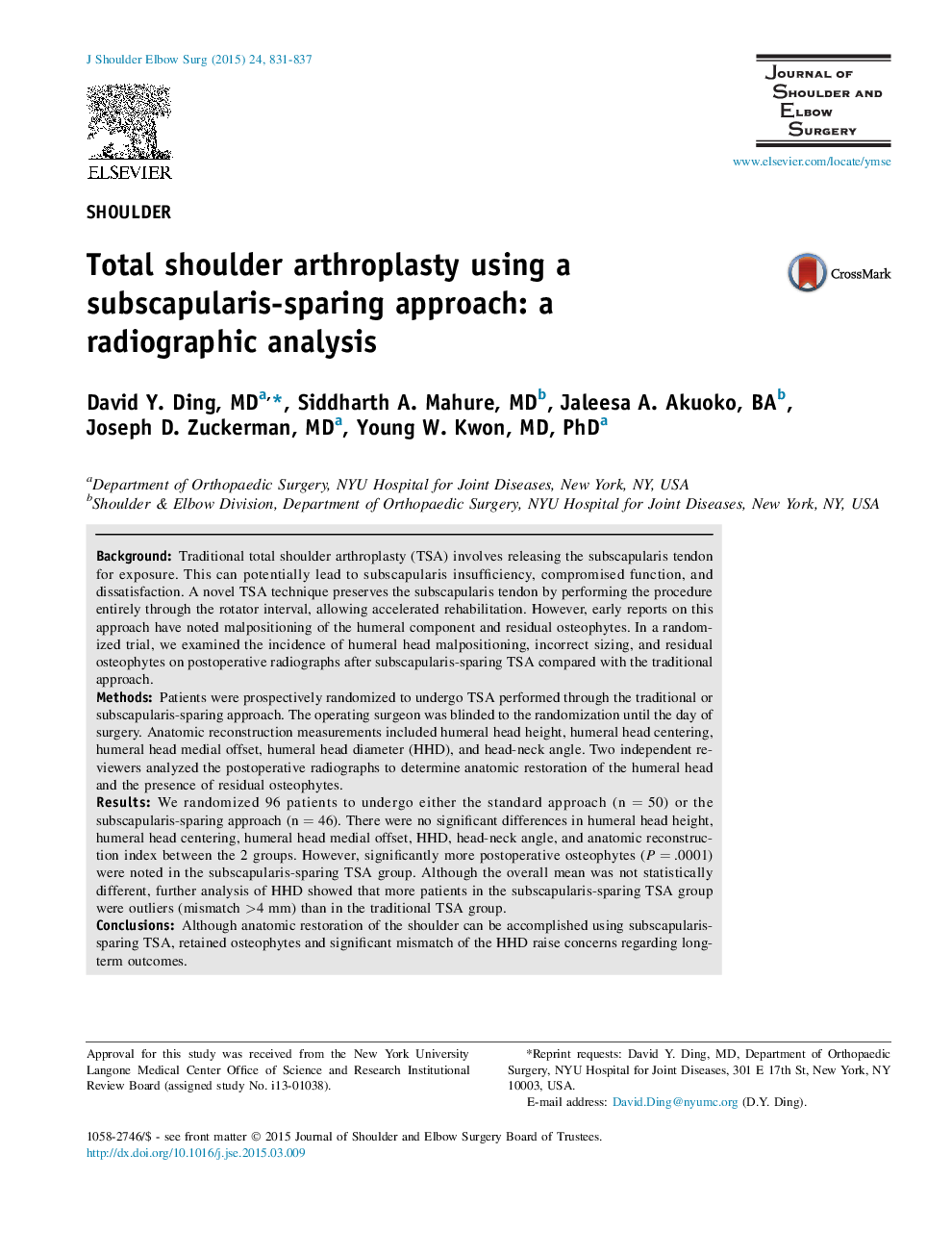| کد مقاله | کد نشریه | سال انتشار | مقاله انگلیسی | نسخه تمام متن |
|---|---|---|---|---|
| 4073156 | 1266974 | 2015 | 7 صفحه PDF | دانلود رایگان |
BackgroundTraditional total shoulder arthroplasty (TSA) involves releasing the subscapularis tendon for exposure. This can potentially lead to subscapularis insufficiency, compromised function, and dissatisfaction. A novel TSA technique preserves the subscapularis tendon by performing the procedure entirely through the rotator interval, allowing accelerated rehabilitation. However, early reports on this approach have noted malpositioning of the humeral component and residual osteophytes. In a randomized trial, we examined the incidence of humeral head malpositioning, incorrect sizing, and residual osteophytes on postoperative radiographs after subscapularis-sparing TSA compared with the traditional approach.MethodsPatients were prospectively randomized to undergo TSA performed through the traditional or subscapularis-sparing approach. The operating surgeon was blinded to the randomization until the day of surgery. Anatomic reconstruction measurements included humeral head height, humeral head centering, humeral head medial offset, humeral head diameter (HHD), and head-neck angle. Two independent reviewers analyzed the postoperative radiographs to determine anatomic restoration of the humeral head and the presence of residual osteophytes.ResultsWe randomized 96 patients to undergo either the standard approach (n = 50) or the subscapularis-sparing approach (n = 46). There were no significant differences in humeral head height, humeral head centering, humeral head medial offset, HHD, head-neck angle, and anatomic reconstruction index between the 2 groups. However, significantly more postoperative osteophytes (P = .0001) were noted in the subscapularis-sparing TSA group. Although the overall mean was not statistically different, further analysis of HHD showed that more patients in the subscapularis-sparing TSA group were outliers (mismatch >4 mm) than in the traditional TSA group.ConclusionsAlthough anatomic restoration of the shoulder can be accomplished using subscapularis-sparing TSA, retained osteophytes and significant mismatch of the HHD raise concerns regarding long-term outcomes.
Journal: Journal of Shoulder and Elbow Surgery - Volume 24, Issue 6, June 2015, Pages 831–837
